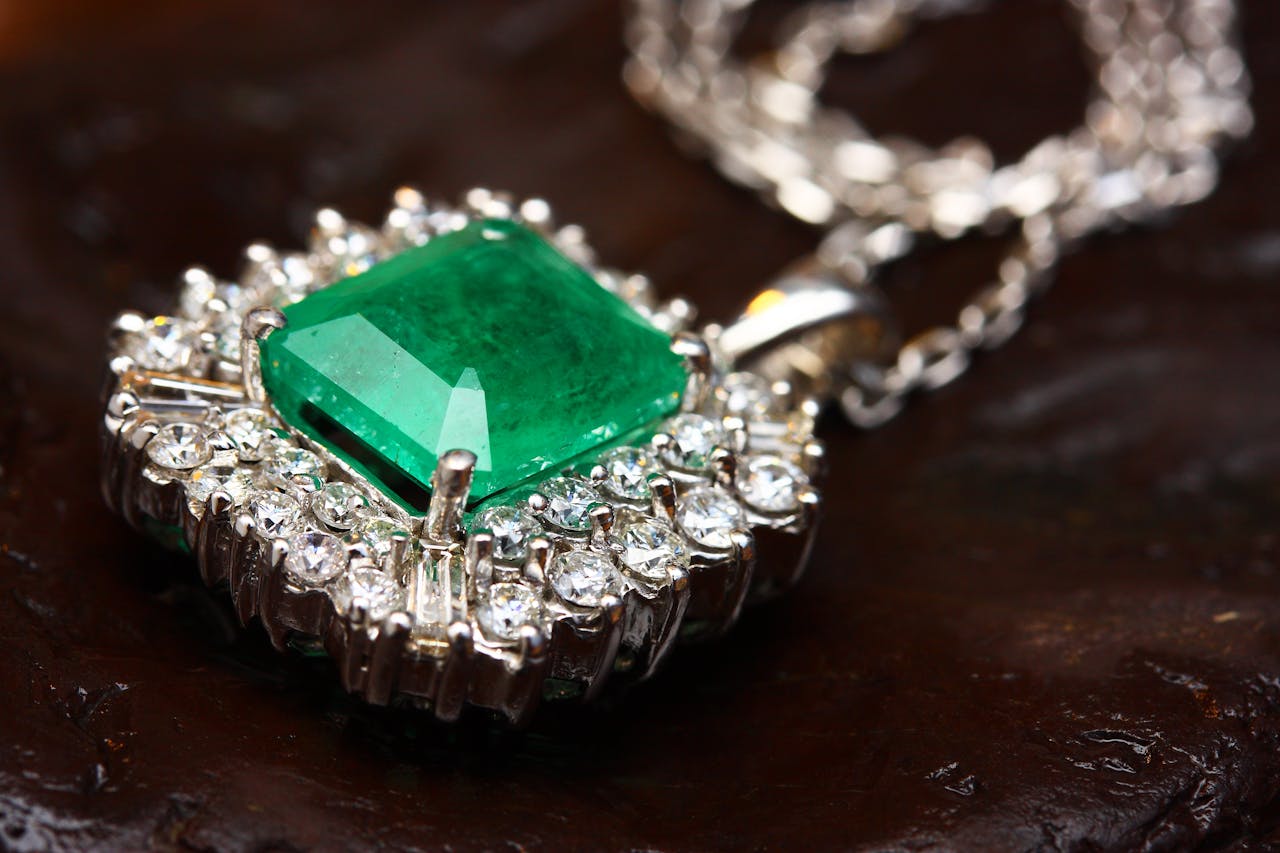White gold has become one of the most sought-after metals in modern jewelry. Though it shares its origin with traditional yellow gold, it carries a distinct elegance and durability that have elevated its status among jewelry lovers and even in other industries. Whether you’re shopping for an engagement ring or exploring high-tech applications, white gold has made a strong impression.
This article dives into the origins, uses, and reasons behind the immense popularity of white gold.
What is White Gold?
White gold is not a naturally occurring element. Instead, it is an alloy made by blending pure yellow gold with other white metals such as palladium, nickel, or silver. These metals give white gold its characteristic silvery-white sheen.
The Role of Rhodium in White Gold
To achieve the stunning luster most people associate with white gold, manufacturers coat the alloy in a layer of rhodium, a member of the platinum family. Rhodium enhances the brightness and shine of white gold, giving it a beautiful, reflective finish.
Why Choose White Gold Over Other Metals?
It has grown in popularity for several reasons:
- Versatility: It works well with various gemstones and suits both formal and casual settings.
- Durability: White gold is stronger than pure yellow gold due to its mixed composition.
- Affordability: Compared to platinum, white gold provides a similar appearance at a lower cost.
- Hypoallergenic Options: White gold made with palladium is suitable for people with sensitive skin.
White Gold vs. Yellow Gold: What’s the Difference?
White gold and yellow gold both come from the same source—pure gold. However, their differences in appearance, durability, and cost set them apart.
Appearance and Composition
Yellow gold retains its warm, golden hue, while white gold has a sleek, modern look. White gold’s silvery appearance makes it an excellent match for diamonds and colored gemstones. Its cool tones provide a more contemporary feel, especially in minimalist jewelry designs.
Strength and Durability
White gold’s composition with metals like palladium or nickel enhances its durability. In contrast, pure yellow gold is softer and prone to scratches. This makes white gold a popular choice for engagement rings and wedding bands that are worn daily.
Price Comparison
White gold tends to be more affordable than platinum, which is denser and rarer. However, it can be slightly more expensive than yellow gold due to the additional metals and rhodium plating involved in its creation.
White Gold in Jewelry
White gold’s rise in the jewelry industry is undeniable. Its neutral, modern aesthetic has made it a top choice for a variety of jewelry types.
Engagement Rings and Wedding Bands
White gold is often used for engagement rings and wedding bands due to its elegance and strength. It pairs exceptionally well with diamonds, providing a sleek backdrop that enhances the stone’s brilliance. Couples who want a classic yet modern look often choose white gold over yellow gold or rose gold.
Maintaining White Gold Rings
Over time, the rhodium plating on white gold can wear off, exposing a slight yellowish hue underneath. To maintain its bright, silvery appearance, jewelers recommend reapplying the rhodium plating every 1 to 2 years, depending on how often the jewelry is worn.
Necklaces, Bracelets, and Earrings
White gold’s versatility extends beyond rings. From intricate necklaces to delicate bracelets, white gold offers a stylish and durable option for many types of jewelry. It complements various gemstones, such as sapphires, emeralds, and rubies, enhancing their natural colors.
Luxury Watches
Luxury watchmakers often use white gold for high-end timepieces. Brands like Rolex and Patek Philippe incorporate white gold into their designs, adding both value and elegance to their watches. White gold’s durability ensures these watches remain timeless and attractive for years.
White Gold in Technology
Beyond jewelry, white gold is also making its mark in the tech world. Its unique properties, such as durability and resistance to corrosion, make it a useful material in various high-tech applications.
White Gold in Electronics
White gold alloys are sometimes used in electronics for precision connectors and switches. These alloys are ideal because they maintain their conductivity and resistance to wear, ensuring the longevity of sensitive electronic components.
White Gold in Medicine
White gold’s hypoallergenic and biocompatible nature makes it useful in the medical field. It can be found in certain medical devices, particularly in applications where durability and compatibility with the human body are essential.
White Gold vs. Platinum: Which Should You Choose?
While both white gold and platinum offer a similar appearance, each metal has its own advantages and drawbacks.
Cost Differences
Platinum is rarer and heavier than white gold, making it more expensive. White gold offers a similar silvery appearance at a more affordable price point, which appeals to budget-conscious buyers who still want a luxury look.
Weight and Comfort
Platinum’s density makes it heavier than white gold. Some people prefer the weight of platinum, associating it with luxury and durability. Others may find white gold’s lighter feel more comfortable for everyday wear.
Maintenance Requirements
Platinum develops a natural patina over time, which some people appreciate for its antique look. On the other hand, white gold requires periodic rhodium plating to maintain its brilliance, but this is a simple and affordable process.
Ethical Considerations and Environmental Impact
Like many precious metals, the extraction and production of white gold can have environmental consequences. Mining gold contributes to deforestation, water pollution, and the release of harmful chemicals like cyanide and mercury into ecosystems. Fortunately, more jewelers are offering sustainable and ethical white gold options.
Recycled White Gold
Jewelers now offer recycled white gold, which minimizes the need for new mining. This process uses gold from old jewelry, electronics, and other sources, refining it to create new pieces. Choosing recycled white gold helps reduce the environmental impact of mining and supports sustainable practices.
Conflict-Free Gold
Many companies are also ensuring that their gold comes from conflict-free sources. These businesses adhere to strict guidelines, ensuring that their gold is mined in areas free from human rights violations or political conflicts.
White Gold: A Timeless Choice
White gold continues to captivate jewelry lovers and collectors alike. Its elegant appearance, durability, and affordability make it a favorite for engagement rings, luxury watches, and even high-tech applications. With its modern aesthetic and versatile uses, white gold remains a top choice for those seeking both beauty and practicality.
As more people turn to ethical and sustainable jewelry options, white gold’s future looks even brighter. Whether you’re in the market for a timeless engagement ring or simply looking for a durable, elegant accessory, white gold offers the perfect balance of luxury and longevity.
Conclusion
White gold has transformed from a lesser-known alternative to yellow gold into one of the most popular choices in the jewelry world. Its versatility, durability, and contemporary look make it a preferred option for engagement rings, luxury watches, and even technology. White gold’s combination of elegance and strength has earned it a lasting place in modern culture, and its future looks promising as people continue to seek out this stunning metal for both personal adornment and practical applications.
For those seeking a blend of modern design and classic beauty, white gold remains a go-to choice. Whether you’re looking for jewelry that will last a lifetime or exploring its potential in cutting-edge technologies, white gold offers timeless appeal.




